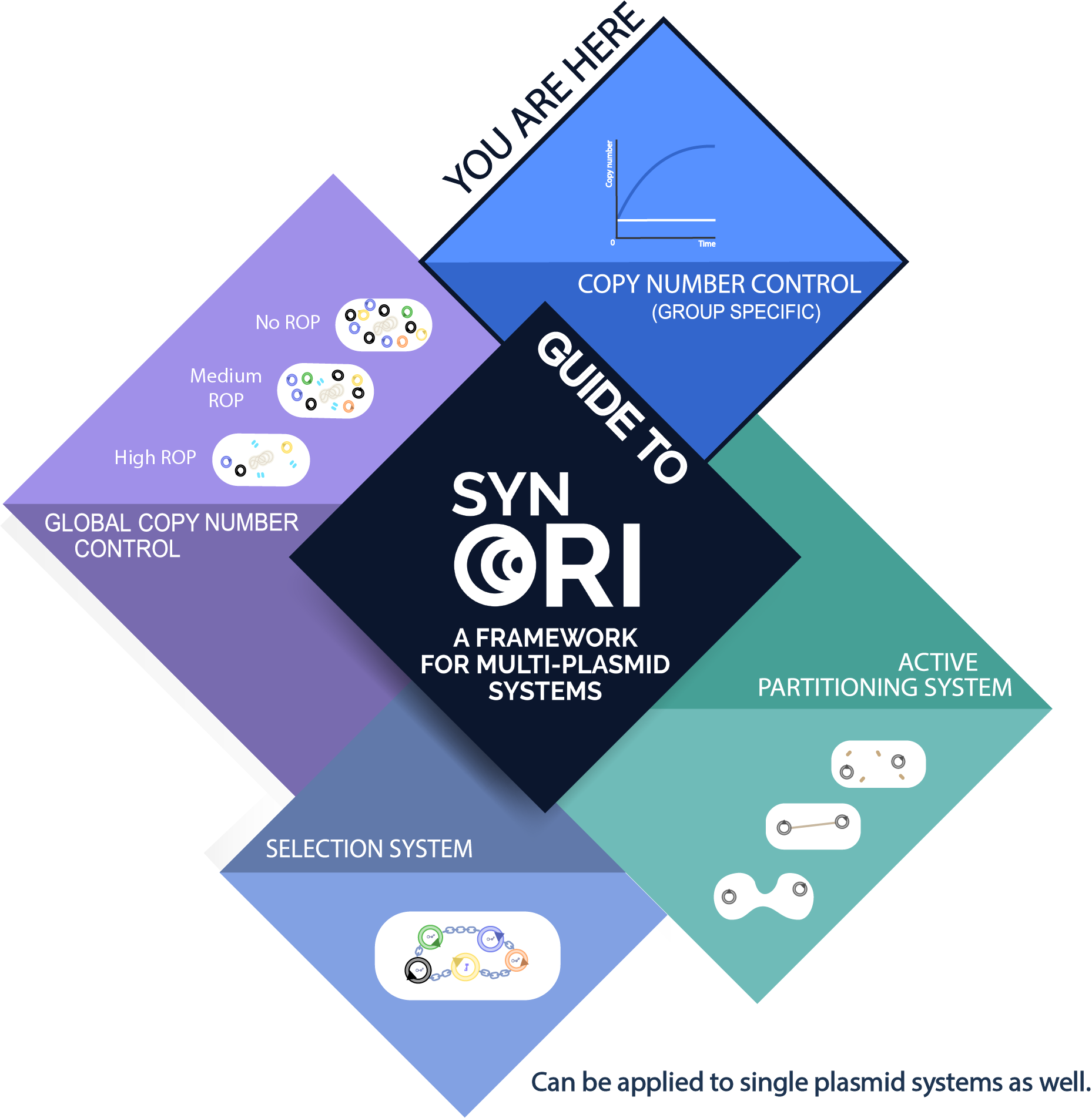Part:BBa_K2259065
SynORI Inducible plasmid copy number device
This construct is an intermediate to full SynORI inducible copy number device. It consists of an Rhamnose promoter and ColE1 RNA I gene (without promoter). It can be combined with part:BBa_K2259000 replication initiation part.
See how this part fits into the whole SynORI framework by pressing here!
Sequence and Features
- 10COMPATIBLE WITH RFC[10]
- 12COMPATIBLE WITH RFC[12]
- 21COMPATIBLE WITH RFC[21]
- 23COMPATIBLE WITH RFC[23]
- 25COMPATIBLE WITH RFC[25]
- 1000COMPATIBLE WITH RFC[1000]
Contents
Introduction
Biology
ColE1 plasmid replication overview
ColE1-type plasmid replication begins with the synthesis of plasmid encoded RNA II (also called primer transcript) by RNA polymerase which initiates transcription at a site 555bp upstream of origin of replication. The RNA transcript forms a RNA - DNA hybrid with template DNA near the origin of replication. Hybridized RNA is then cleaved at the replication origin by RNAse H and serves as a primer for DNA synthesis by DNA polymerase I (Figure 1. A).
Initiation of replication can be inhibited by plasmid encoded small RNA, called RNA I . Synthesis of RNA I starts 445 bp upstream of the replication origin and proceeds in the direction opposite to that of RNA II synthesis, and terminates near the RNA II transcription initiation site. RNA I binds to RNA II and thereby prevents the formation of a secondary structure of RNA II that is necessary for hybridization of RNA II to the template DNA (Figure 1. B).
For RNA I to inhibit primer formation, it must bind before the nascent RNA II transcript extends to the replication origin. Consequently, the concentration of RNA I and the rate of binding of RNA I to RNA II is critical for regulation of primer formation and thus for plasmid replication.
The interaction between RNA I and RNA II can be amplified by Rop protein, see part:BBa_K2259010.
Usage with SynORI (Framework for multi-plasmid systems)
About SynORI
SynORI is a framework for multi-plasmid systems created by Vilnius-Lithuania 2017 which enables quick and easy workflow with multiple plasmids, while also allowing to freely pick and modulate copy number for every unique plasmid group! Read more about [http://2017.igem.org/Team:Vilnius-Lithuania SynORI here]!
Regulative RNA II molecule in SynORI
RNA II gene is foundational and central biobrick of SynORI system and by far the only one that is mandatory for a framework to run. The two main functions of RNA II is as follows:
- Initiating plasmid replication
- Interacting with RNA I of specific plasmid group (See below)
RNA II and RNA I in the engineering of unique plasmid groups for multi-plasmid system
RNA II molecule interacts with inhibitory RNA I molecule with three secondary structure RNA stem loops. In order to create plasmid groups with independent copy number control, one group's RNA II molecule must interact only with the same group's RNA I molecule.
For example if there are two plasmid groups in a cell - A and B - RNA II of A group would only interact with RNA I A, and not RNA I B.
See the Design section or [http://2017.igem.org/Team:Vilnius-Lithuania Vilnius-Lithuania 2017 team wiki] for more insight about our synthetic origin of replication (SynORI).
Origin of RNA II biobrick
If RNA II and RNA I are naturally an antisense system, why are there two separate constructs in SynORI system?
In order to flexibly control the synthesis of RNA I, the RNA I gene first needed to be inactivated in the ColE1 origin of replication. That, however, was not a trivial task, because by changing RNA I promoter sequence, one also changes the RNA II secondary structure, which is crucial for plasmid replication initiation. This is the main reason why, in the SynORI framework, the wildtype ColE1 ORI is split into two different parts - RNR I and RNA II .
<Picture of how RNA I promoter mutations might destroy RNA II secondary structure.>
Characterization
In order to characterize this construct, it must be cloned next to RNA II gene. Please see part:BBa_K2259068.
References
//collections/synori
| None |



